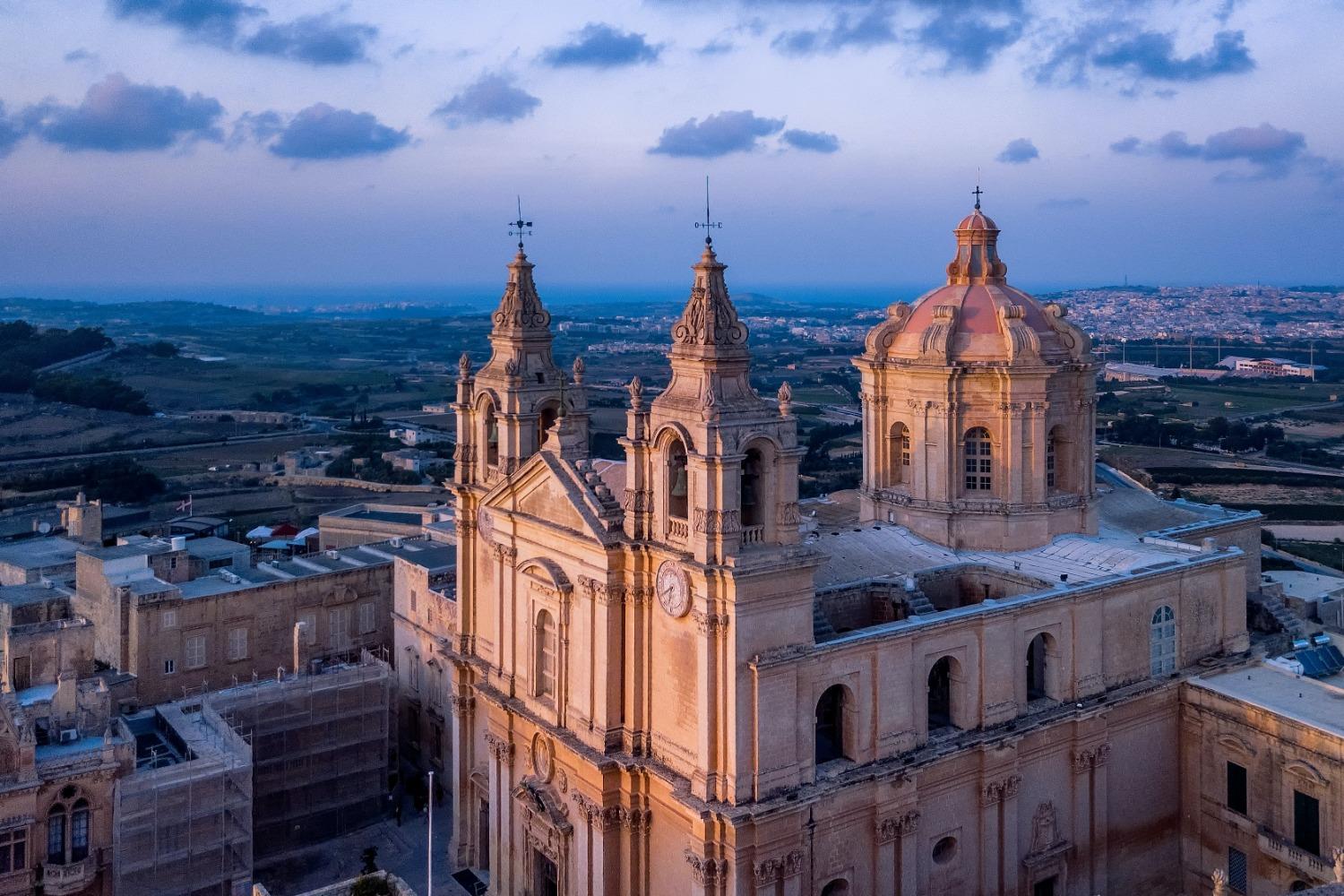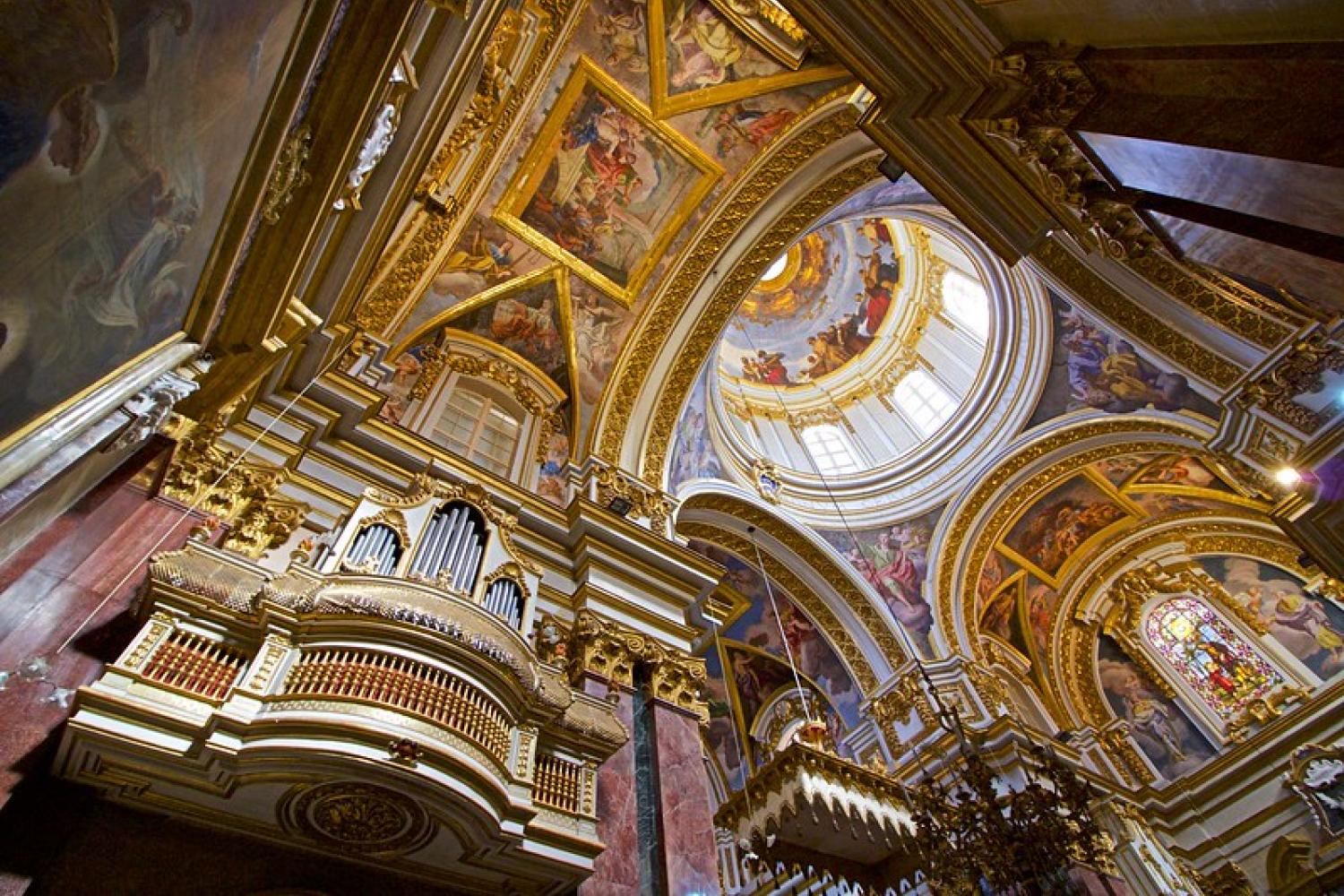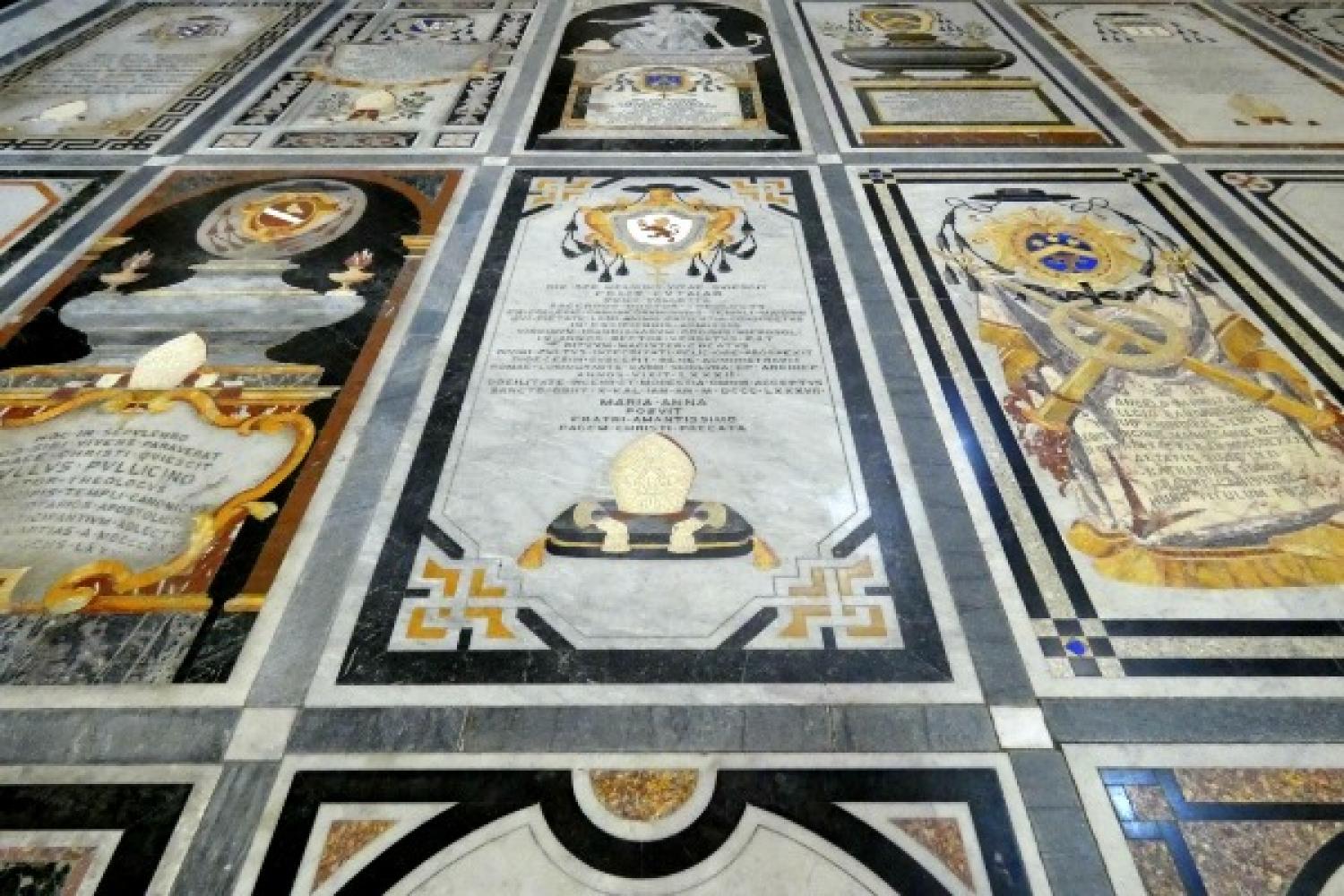
As he was being taken to Rome to stand trial before the Emperor, the Roman ship transporting St. Paul was blown off course by a violent storm, wrecking against the coast of Malta two weeks later. As the ship wrecked, prisoners and soldiers alike jumped overboard and swam ashore:
St. Paul's time in Malta led to the Christianization of the island nation. From the small island upon which he first swam ashore to the cave in which he lived, memories of the Apostle's providential visit live on. Publius himself was brought to conversion, serving as the first Bishop of Malta before becoming the Bishop of Athens. St. Publius was martyred at Athens in the early second century.
One of the most famous pilgrimage sites in Malta is the Metropolitan Cathedral of Saint Paul in Mdina, built over the site of Publius' palace (and thus presumably the meeting place of the two saints). When the twelfth-century cathedral (which itself stood above the ruins of a more ancient church) was destroyed in an earthquake in 1693, construction on a new Baroque cathedral according to the design of Maltese master Lorenzo Gafà was begun. The light limestone church, completed in 1705, sits among palaces of similar styles, all within the confines of the ancient city walls. From the ramparts of Mdina (which had served as the capital of Malta from ancient times until the Knights of Malta transferred the administration of the nation to Birgu), much of the small island nation can be seen.
The simple façade of the church is contrasted with an ornate interior, which displays the works of numerous Maltese artists throughout the last several centuries. Many of the works of art lining the interior of the church have been redone multiple times in attempts to restore the church and repair damages. The dome of the cathedral, for instance, has been decorated by numerous artists, with the most recent rendition being completed in 1954. The cathedral's decoration is not limited to the frescoes and paintings of great Maltese artists, however: the floor itself is comprised of a grid of individually decorated marble tombstones marking and commemorative slabs dedicated to numerous bishops, priests, and prominent laypeople of Malta.
A virtual tour of the stunning cathedral can be found here.
The Mdina Cathedral is home to countless artistic and historical treasures, as the cathedral has long been considered the heart of the Church on an island nation that traces its conversion to St. Paul and claims to be the world's first Christian nation. As one passes through the inornate but elegant facade, one comes face to face with generations of work dedicated to showing forth the beauty of the faith.
Photo Attribution A: "St. Paul's Cathedral, Mdina" by Tristan Reville is licensed under CC BY-ND 2.0.
Photo Attribution B: "Marble Tomb Floor" by Linda De Volder is licensed under CC BY-NC-ND 2.0.
The First Draught
To receive the Weekly Update in your inbox every week, along with our weekly Lectio Brevis providing insights into upcoming Mass readings, subscribe to The First Draught.

